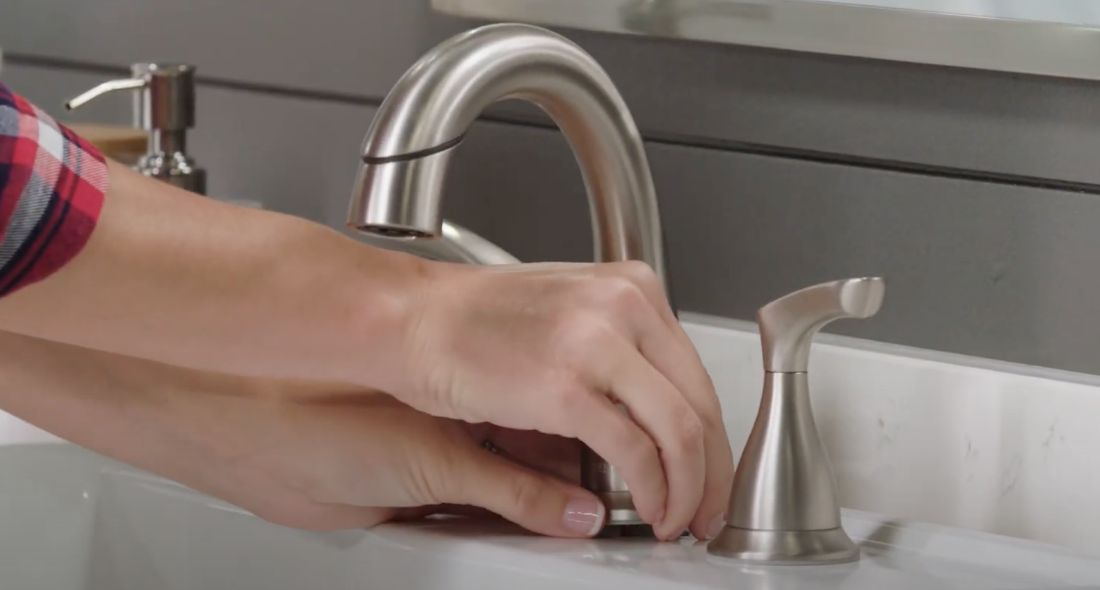Our Advantages of Dealing with a Leaking Faucet
Our Advantages of Dealing with a Leaking Faucet
Blog Article
Listed here in the next paragraphs you'll find a good deal of decent resources in regards to What Causes Leaky Faucets & How To Fix Them.

Leaking faucets could feel like a small aggravation, yet their effect exceeds just the inconvenience of the sound. From drainage to sustaining unnecessary monetary costs and wellness threats, neglecting a trickling faucet can lead to numerous consequences. In this write-up, we'll explore why it's crucial to address this typical house issue without delay and efficiently.
Waste of Water
Ecological Impact
Leaking taps add considerably to water waste. According to the Epa (EPA), a solitary tap trickling at one drip per second can squander more than 3,000 gallons of water annually. This not just stress water sources yet additionally influences ecosystems and wildlife dependent on them.
Step-by-Step Guide to Taking Care Of a Dripping Tap
Tools Needed
Before attempting to fix a dripping faucet, collect the necessary devices, consisting of a flexible wrench, screwdrivers, substitute parts (such as washers or cartridges), and plumber's tape.
Usual Tap Issues and Their Solutions
Determine the type of faucet and the specific concern triggering the drip. Common troubles include damaged washers, rusty valve seats, or faulty O-rings. Describe producer guidelines or on the internet tutorials for detailed guidance on repair services.
Financial Costs
Boosted Water Costs
Beyond the ecological influence, dripping faucets can blow up water bills significantly. The gathered wastage in time equates into higher energy expenditures, which can have been avoided with timely repair work.
Prospective Property Damage
Moreover, prolonged dripping can lead to harm to components and surfaces surrounding the faucet. Water accumulation can create discoloration, rust, and even structural issues if left neglected, causing extra repair work costs.
Health and wellness Concerns
Mold And Mildew and Mildew Growth
The consistent existence of moisture from a trickling faucet develops a suitable environment for mold and mildew and mildew development. These fungi not only compromise interior air quality however also present health dangers, particularly for individuals with respiratory system conditions or allergies.
Waterborne Conditions
Stationary water in dripping faucets can end up being a breeding place for microorganisms and other microorganisms, boosting the threat of waterborne conditions. Contaminants such as Legionella bacteria prosper in stationary water, possibly bring about severe ailments when consumed or breathed in.
Do it yourself vs. Professional Fixing
Benefits and drawbacks of Do It Yourself Repair
While some might try to deal with a trickling tap themselves, DIY repair work come with their very own set of challenges. Without correct expertise and tools, do it yourself efforts can exacerbate the concern or cause incomplete fixings, extending the problem.
Benefits of Hiring an Expert Plumber
Hiring an expert plumber ensures that the underlying root cause of the dripping tap is attended to properly. Plumbing technicians have the knowledge and tools to detect and repair faucet problems successfully, conserving time and minimizing the risk of additional damages.
Environmental Responsibility
Individual Contribution to Conservation
Taking obligation for taking care of leaking faucets lines up with wider efforts toward water conservation and ecological sustainability. Every individual's actions collectively make a substantial influence on maintaining valuable resources.
Lasting Living Practices
By focusing on timely repair work and taking on water-saving behaviors, individuals add to sustainable living techniques that profit both present and future generations.
Safety nets
Regular Upkeep Tips
To avoid trickling faucets, execute routine upkeep such as cleaning up aerators, evaluating for leaks, and changing damaged parts immediately. In addition, think about mounting water-saving devices or upgrading to extra efficient fixtures.
Value of Prompt Services
Dealing with leaking taps as quickly as they're seen prevents further water waste and prospective damage, eventually conserving both water and cash over time.
Effect On Property Worth
Assumption of Well-Maintained Property
Preserving a building in good condition, including attending to maintenance problems like leaking faucets, enhances its regarded value and value amongst prospective buyers or tenants.
Impact on Resale Value
Characteristics with well-kept plumbing fixtures, consisting of taps, command higher resale worths in the realty market. Resolving leaking taps can contribute to a favorable impact during property assessments and negotiations.
Final thought
Dealing with a leaking tap goes beyond mere comfort; it's a crucial step toward conserving water, decreasing monetary expenses, and securing wellness and property. Whether through DIY repairs or specialist help, acting to take care of leaking faucets is a small yet impactful way to advertise accountable stewardship of resources and contribute to a much healthier, a lot more sustainable future.
How to Fix a Leaky Faucet: Step-by-Step Repair Guide
A leaky faucet may seem like a simple annoyance, but if it's not fixed promptly, that leak could cost hundreds to potentially thousands. From water damage to mold, mildew, and high water bills, even a tiny leak can be catastrophic if left unattended. Damage like this can even affect the overall value of your home, so it's important to take the right approach for leaky faucet repair. You may need the help of a plumber in some cases, but we've got a few tips you can try on how to fix a leaky faucet before calling the pros.
Four Faucet Types
When you're learning how to fix a leaky faucet, the first step is knowing what kind of faucet you're working with! There are four common types.
Cartridge Faucets
Cartridge faucets come in one- or two-handled varieties. In one-handled cartridge faucets, hot and cold water combines in a single cartridge. In the two-handled versions, hot and cold water are controlled separately and mixed in the faucet.
Ball Faucets
Ball faucets have a single lever you push up and down to adjust the pressure and rotate to change the temperature. A slotted metal ball controls the amount of water allowed into the spout.
Compression Washer Faucets
They're the oldest type of faucet, but they're still used in many homes — especially older ones. Compression faucets have two separate handles that, when turned, raise or lower the washer that seals a water valve. This valve stops water from flowing through the faucet when it is turned off.
Disc Faucets
Disc faucets rarely need to be repaired due to their maintenance-free design. The water flow is controlled by two discs — the upper one raises and lowers against a fixed lower disc, creating a watertight seal. If your disc faucet starts leaking, you may need to replace the seals or clean residue buildup from the inlets.
Fixing a Leaky Faucet
Step 1: Turn Off the Water
Whether you're learning how to fix a leaky bathtub faucet or how to fix a leaky kitchen faucet, always turn off the water supply to your working area when you're fixing a leak. The last thing you want is a flood added to your list of things to fix.
Look for the shutoff valves below your sink or around the tub and turn them clockwise to stop the water flow. If your faucet doesn't have shutoff valves, you may need to turn off the water for the whole house. Check to make sure it's off by turning the faucet on. If nothing comes out, you're ready to start the repair.
Step 2: Take Apart the Faucet
How you disassemble your faucet depends on the type of fixture you have. You can use a flathead screwdriver to remove the caps on top of the handle or handles for cartridge and compression faucets. Inside, you should see handle screws. Unscrew these with a screwdriver to remove the handle.
Disc- and ball-style faucets will typically have an inlet screw near the handle, and removing that will reveal the interior of the faucet.
Detach the Valve Stem
For cartridge- and compression-style faucets, you'll see the inner valve stem or cartridge once you remove the faucet handles. If you have a compression faucet, unscrew the brass valve stem. If you have a cartridge faucet, pull out the cartridge. If your cartridge has been in place for a while, it may require some tools or extra force to remove it due to mineral deposits.
Examine and Replace Parts
Once you've removed the parts, check them out to confirm what needs to be replaced. You may see corroded rubber washers, O-rings, stems, or cartridges. On a ball-style faucet, check the seats and springs for damage.
If you need to repair a leaky disc faucet, check the inlet and seals on the lower disc.
Once you determine what parts must be replaced, visit your local hardware store. Bring the damaged parts with you to ensure you can purchase the correct components to replace them.
Clean Valves and Faucet Cavity
If you've removed a stem or cartridge, you may notice mineral buildup in the faucet's threads. Use white vinegar to clean the valve seat by soaking it for a few minutes, then scrub it away with a soft toothbrush and rinse with warm water. You can also clean the interior of the faucet in the same way.
Reassemble the Faucet
Once your faucet is cleaned and the required parts have been replaced, it's time to reassemble it. Put the pieces back together and slowly turn the water supply back on. Doing this slowly is crucial because too much initial water pressure can damage the new hardware you've just installed.
https://homewarranty.firstam.com/blog/how-to-fix-leaky-faucet

Do you appreciate reading up on Leaky Faucets: Why They Happen & What to Do About Them? Create a review below. We would be pleased to see your reactions about this blog entry. Hoping to see you back again later on. Please take the time to distribute this page if you enjoyed reading it. Thanks a lot for taking the time to read it.
Report this page